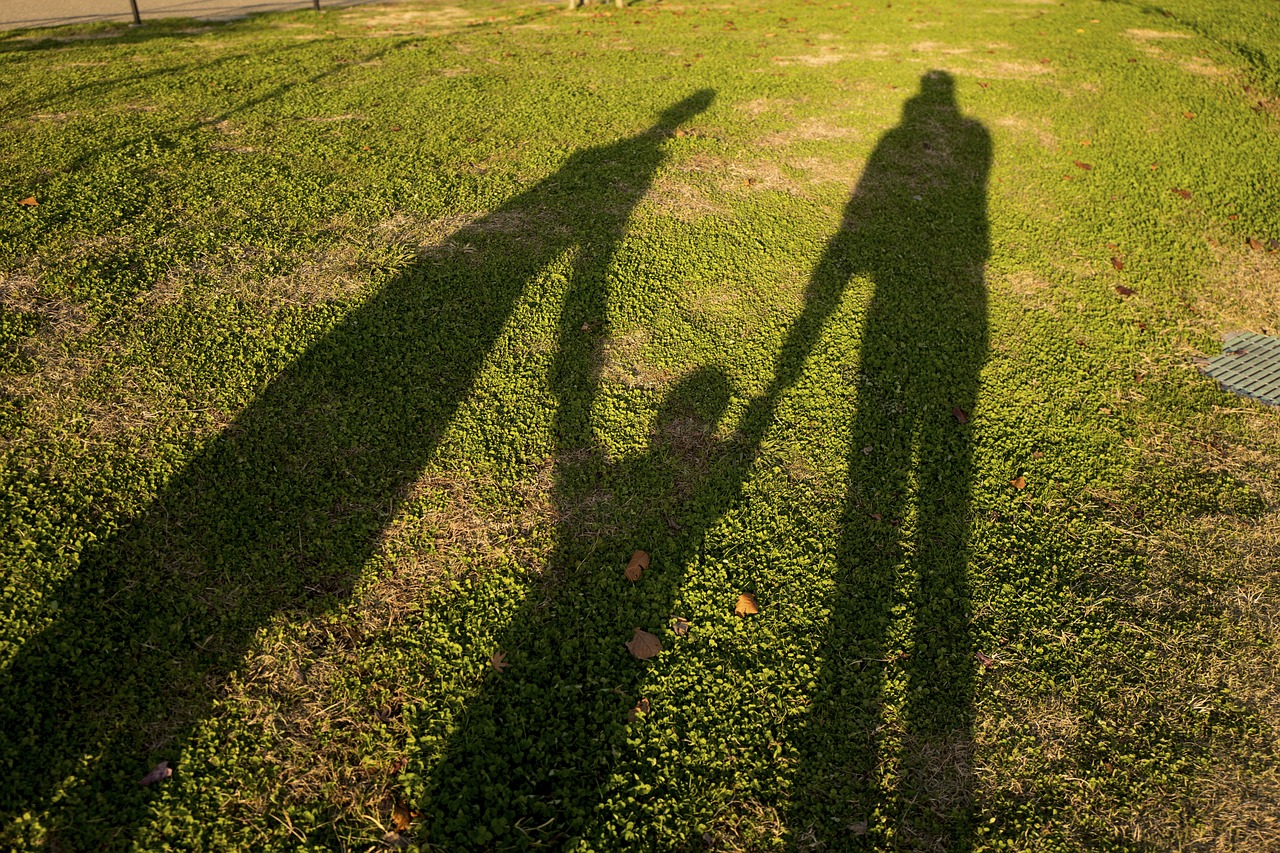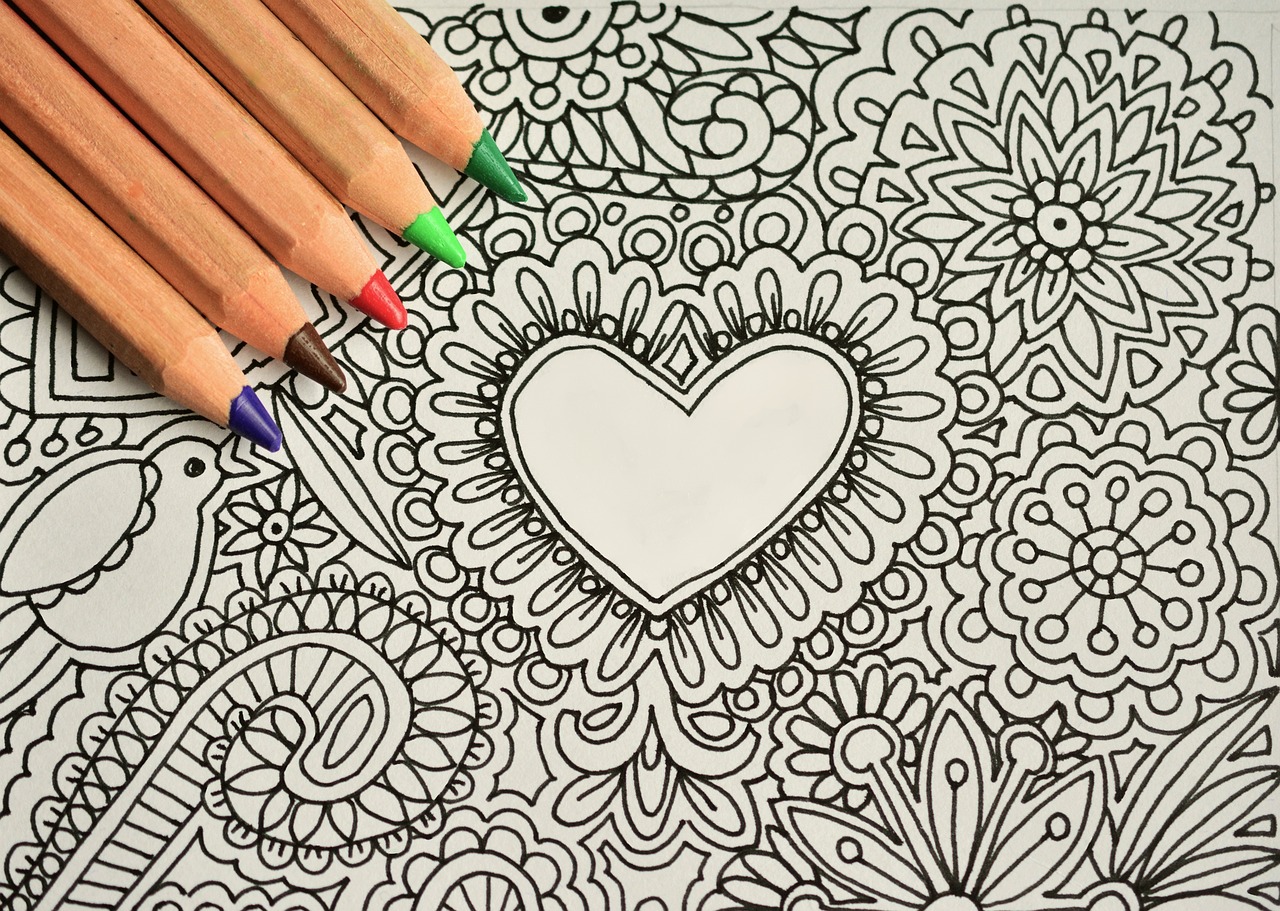Mastering Shadows and Highlights in Drawing
Welcome to the fascinating world of drawing, where shadows and highlights play a pivotal role in transforming simple sketches into captivating works of art. Imagine standing in a sunlit room, noticing how the light dances across surfaces, casting shadows that create depth and intrigue. This article explores the essential techniques of using shadows and highlights to enhance your drawings, creating a sense of realism that draws viewers in. By mastering these elements, you can manipulate light and shadow, bringing your artwork to life in ways that not only impress but also evoke emotion.
Understanding how light interacts with objects is crucial for creating realistic drawings. Light is not just a source of illumination; it defines the very essence of form and structure. Whether you're drawing a still life, a portrait, or a landscape, the way light hits an object determines how we perceive it. There are various types of light sources, from the soft glow of a candle to the harsh glare of midday sun, and each affects shadows and highlights differently. For instance, natural light tends to create softer shadows, while artificial light can produce stark contrasts. Grasping these nuances will allow you to replicate them in your art, making your drawings feel more lifelike.
Shadows can vary greatly depending on the light source and the object's shape. They are not merely black blobs on the ground; they tell a story about the interaction between light and form. Understanding the different types of shadows is essential for any artist aiming to add depth to their work. In this section, we will discuss the various types of shadows, including cast shadows and form shadows, and how to depict them effectively. Each type of shadow serves a unique purpose, and knowing how to illustrate them can elevate your drawings from flat to dynamic.
Cast shadows are created when an object blocks light, resulting in a darker area on the surface behind it. These shadows can vary in intensity and softness, depending on the distance from the light source and the surface texture. To accurately render cast shadows, you need to observe how they interact with their surroundings. For example, a cast shadow on a rough surface will have a different texture than one on a smooth surface. The key is to pay close attention to the edges of the shadow: are they sharp or soft? This observation will guide your pencil strokes, making your drawings feel more authentic.
Different surfaces affect the appearance of cast shadows. For instance, a shadow cast on a grass lawn will look different than one cast on a tiled floor. Here are some characteristics to consider:
- Color: Shadows often take on a hue influenced by the surface beneath them.
- Texture: The texture of the surface can add detail to the shadow, making it appear more realistic.
- Opacity: Shadows can vary in darkness, depending on the light source's intensity and distance.
By observing these characteristics, you can replicate them in your artwork, enhancing the realism of your pieces.
Knowing where to place cast shadows is essential for achieving a natural look in your drawings. This requires an understanding of perspective and angles. Imagine you're lighting a scene with a single light bulb; the shadow will fall in the opposite direction. By practicing with different light sources and angles, you can develop an intuitive sense for shadow placement. Remember, shadows should align naturally with light sources, adding coherence to your artwork.
Form shadows give volume to objects, creating the illusion of three-dimensionality. Unlike cast shadows, which are determined by the light source, form shadows are intrinsic to the object itself. They occur on the surfaces of an object that are turned away from the light. Identifying and illustrating form shadows is crucial for enhancing your drawings. Think of a sphere: the light will hit one side, creating a highlight, while the opposite side will be in shadow. By carefully observing how light interacts with different shapes, you can add depth and realism to your drawings.
Highlights are just as important as shadows in creating depth. They draw the viewer's eye and add a sense of vibrancy to your artwork. In this section, we will explore various techniques to effectively apply highlights and make your drawings pop. Whether you're using traditional mediums like pencil and charcoal or digital tools, understanding how to create highlights will elevate your work.
Different drawing mediums offer unique ways to create highlights. For example, pencils allow for fine, precise lines, while charcoal can create broader, softer highlights. Digital mediums provide endless possibilities, enabling artists to adjust brightness and opacity with ease. Each medium has its advantages and limitations, and experimenting with them will help you find the best tools for your style.
Layering is a powerful method for achieving realistic highlights. By gradually building layers of color or tone, you can create a polished and dynamic effect in your drawings. Start with a light base and gradually add darker tones, focusing on the areas where light naturally hits. This technique not only adds depth but also allows for greater control over the final appearance of your artwork.
Q: How do I know where to place highlights and shadows?
A: Observing the light source and how it interacts with your subject is key. Consider the direction of the light and the shapes of the objects to determine where shadows and highlights should be placed.
Q: Can I use colored pencils for highlights?
A: Absolutely! Colored pencils can create beautiful highlights, especially when layered over a base color. Just be mindful of the pressure you apply to maintain the lightness of the highlight.
Q: What if I make a mistake while drawing shadows or highlights?
A: Mistakes are part of the learning process! You can often correct them by adjusting the surrounding areas or adding more layers. Don't be afraid to experiment!

The Importance of Light in Drawing
When it comes to drawing, light is your best friend. Imagine trying to paint a beautiful sunset without the sun's rays illuminating the sky; it just wouldn't have the same impact, right? Light plays a pivotal role in how we perceive objects, adding depth, dimension, and realism to our artwork. Understanding how light interacts with various surfaces and materials can transform a flat drawing into a stunning representation of reality.
There are several types of light sources you need to consider when creating your art. Each source can drastically change the way shadows and highlights appear. For instance, natural light from the sun creates softer, more diffused shadows, while artificial lights, like fluorescent bulbs, can produce harsh, stark contrasts. Here are some common types of light sources:
- Natural Light: This includes sunlight and moonlight, which can create beautiful gradients.
- Artificial Light: Light bulbs, lamps, and LEDs can offer a variety of colors and intensities.
- Reflective Light: Light bouncing off surfaces can create subtle highlights and shadows.
Understanding these light types is essential for artists because they dictate how shadows and highlights will behave. Think of light as a sculptor; it shapes the way we see form and volume. Without a solid grasp of how light works, your drawings may end up looking flat or unrealistic.
Moreover, the angle of the light source can dramatically affect the shadows and highlights in your drawing. For example, when the light is positioned directly above an object, it casts minimal shadows. Conversely, if the light source is at a low angle, it creates long, dramatic shadows that can add a sense of mystery or drama to your work. This is where understanding the concept of chiaroscuro—the contrast between light and dark—becomes crucial.
To truly master the use of light in your drawings, consider practicing with different light sources. Set up a still life with a lamp, or take your sketchbook outside on a sunny day. Observe how the light interacts with the objects around you. Take notes on the shapes of the shadows and the intensity of the highlights. This hands-on approach will deepen your understanding and appreciation of light's role in your artistic process.
In conclusion, light is not just a tool; it's an essential element that can elevate your drawings from ordinary to extraordinary. By paying close attention to how light influences shadows and highlights, you can create artwork that resonates with depth and realism. So, grab your pencils, and let the light guide your hand!

Types of Shadows
Shadows are not just dark spots on a piece of paper; they are the unsung heroes of drawing that add depth and dimension to your artwork. Understanding the different types of shadows can transform a flat image into a vibrant, three-dimensional masterpiece. Shadows can be categorized primarily into two types: cast shadows and form shadows. Each type serves a unique purpose and contributes differently to the overall composition of your drawing.
Cast shadows occur when an object blocks a light source, creating a shadow on a surface behind it. Imagine the way a tree casts a shadow on the ground during a sunny day. The shape and size of the cast shadow depend on the light source's intensity and angle. For instance, a low-angle light source, like the setting sun, will create long, dramatic shadows, while a direct overhead light will produce shorter, more compact shadows. It's essential to observe how these shadows interact with different surfaces, as the texture and color of the surface can affect the shadow's appearance.
On the other hand, form shadows are those subtle shadows that exist on the object itself, giving it volume and shape. Think of a round ball; the way light hits it creates a gradient from light to dark, which is the form shadow. These shadows are crucial for conveying the object's curvature and depth. Unlike cast shadows, form shadows are influenced by the object's shape and the light's direction rather than the surface it rests upon.
To help visualize these concepts, consider the following table that outlines the key differences between cast shadows and form shadows:
| Type of Shadow | Description | Examples |
|---|---|---|
| Cast Shadows | Shadows created when an object blocks light, projecting onto another surface. | Tree casting a shadow on the ground, a person’s shadow on a wall. |
| Form Shadows | Shadows on the object itself that indicate its volume and shape. | Shadows on a sphere, the curves of a face in profile. |
Understanding these types of shadows is crucial for any artist looking to create realistic and compelling drawings. By mastering the art of shadowing, you can breathe life into your sketches, making them not just images, but stories waiting to be told. So, the next time you pick up your pencil, take a moment to observe the shadows around you; they are more than mere absence of light—they are the key to unlocking the full potential of your art.
- What is the difference between cast shadows and form shadows?
Cast shadows are created by an object blocking light and are projected onto another surface, while form shadows exist on the object itself and help convey its shape and volume. - How can I practice drawing shadows?
Start by observing real-life objects in different lighting conditions and practice sketching their shadows. Use a light source to create shadows and experiment with different angles. - What tools are best for drawing shadows?
Pencils, charcoal, and pastels are excellent tools for creating shadows. Each medium offers different textures and effects, so choose one that fits your style.

Cast Shadows
When it comes to drawing, understanding is like having a secret weapon in your artistic arsenal. These shadows are formed when an object blocks a light source, creating a dark shape on the surface beneath it. Think of it as the way a tree casts a shadow on the ground when the sun shines brightly overhead. Capturing this effect in your drawings can significantly enhance the sense of depth and realism.
To accurately render cast shadows, you need to consider a few key factors. First, the light source plays a pivotal role in determining the shadow's characteristics. Is your light source direct and harsh, like the midday sun, or is it soft and diffused, like the light on a cloudy day? The intensity and angle of the light will dictate not only the size and shape of the shadow but also its sharpness and softness.
Next, observe the surface on which the shadow falls. Different surfaces can dramatically alter the appearance of cast shadows. For example, a shadow on a rough, textured surface will appear differently than one cast on a smooth, shiny floor. The way light interacts with these surfaces can create various effects, from harsh edges to soft gradients. To illustrate this, consider the following table:
| Surface Type | Shadow Characteristics |
|---|---|
| Rough | Soft edges, uneven darkness |
| Smooth | Sharp edges, uniform darkness |
| Reflective | Faint shadows, possible highlights within shadow |
Now, let’s talk about the placement of cast shadows. This is where the principles of perspective come into play. Shadows should align with the light source and the object's position relative to it. If you're drawing a lamp on a table, the shadow will stretch away from the light source, following the angle of the light. This creates a natural look and adds to the three-dimensionality of your work.
To help you visualize this, imagine a simple scenario: you have a ball sitting on the ground with a light above it. The shadow will be cast directly opposite the light source, and depending on the height of the light, the shadow may be short or long. Understanding this relationship is crucial for creating convincing cast shadows in your art.
Ultimately, mastering the art of cast shadows is all about observation and practice. Spend some time studying how shadows behave in real life. Grab a sketchbook and head outside or set up a still life at home. The more you practice, the more intuitive this process will become, and soon enough, your drawings will have that stunning depth that captures the viewer's eye.
- What is the difference between cast shadows and form shadows? Cast shadows are created by an object blocking light, while form shadows are the darker areas on an object itself that give it volume.
- How do I determine the angle of the shadow? The angle of the shadow is determined by the position of the light source relative to the object; the lower the light source, the longer the shadow.
- Can I use color in my shadows? Absolutely! Shadows can often have subtle hues, influenced by the surrounding environment. Experiment with adding color to create more dynamic shadows.

Characteristics of Cast Shadows
When it comes to capturing the essence of cast shadows in your drawings, understanding their characteristics is paramount. Cast shadows are not just dark shapes on a surface; they tell a story about the light source, the object, and the environment. Each shadow has its own unique traits that can dramatically influence the overall composition of your artwork.
One of the most important characteristics of cast shadows is their shape. The shape of a shadow is determined by the object's form and the angle of the light source. For example, a round object like a ball will cast a circular shadow, while an irregularly shaped object will produce a more complex shadow. This variation in shape adds interest to your drawing and helps to convey the object's three-dimensionality.
Another key aspect to consider is the softness or hardness of the shadow's edges. Shadows can vary from sharp and defined to soft and blurred. This quality is influenced by the distance of the light source from the object and the type of light being used. For instance, a bright, direct light source will create a hard shadow with crisp edges, whereas a diffused light source, like an overcast sky, will result in softer, more gradual transitions. Observing these differences can greatly enhance the realism of your drawings.
Additionally, the intensity of the shadow plays a significant role in how it interacts with the surrounding environment. Shadows are typically darkest at the base of the object and gradually lighten as they extend away from it. This gradient effect is crucial for achieving depth. To illustrate this, you might consider how a shadow falls on different surfaces. For example:
| Surface Type | Shadow Characteristics |
|---|---|
| Concrete | Sharp edges, high contrast |
| Grass | Soft edges, blended with color |
| Sand | Diffused edges, lighter overall |
Furthermore, the color of the shadow is another fascinating characteristic. While we often think of shadows as merely black or gray, they can actually take on hues from their surroundings. For instance, a shadow cast on a green surface might appear slightly bluish or muted green due to the color reflection. This subtlety can add a layer of complexity to your artwork, making it more engaging for the viewer.
Lastly, the context in which the shadow exists is essential. Shadows can communicate the time of day, the mood of a scene, or even the season. A long, stretched shadow during sunset can evoke feelings of nostalgia, while a short, sharp shadow at noon may feel more intense and harsh. By being mindful of these characteristics, you can create cast shadows that not only provide depth but also enhance the narrative of your drawings.

Placement of Cast Shadows
When it comes to the , understanding the relationship between the light source, the object, and the surface beneath is absolutely crucial. Imagine you are outside on a sunny day. The way your shadow stretches out behind you is directly influenced by the position of the sun in the sky. Similarly, in your drawings, the placement of cast shadows can either enhance or detract from the overall realism of your artwork.
To start, consider the light source. Is it above, below, or to the side of your object? The angle of the light will dictate how long and where the shadow falls. For instance, if the light source is high above, the shadow will be shorter and may fall directly beneath the object. On the other hand, if the light is coming from a low angle, the shadow will elongate and stretch further away. This principle is essential to capture that lifelike quality in your drawings.
Next, think about the surface on which the shadow is cast. Different surfaces react to shadows in unique ways. A rough, textured surface will create a more diffused shadow, while a smooth surface will produce a sharper, more defined shadow. Therefore, when placing your shadows, take a moment to observe the environment around your subject. Ask yourself: What type of surface am I drawing on? How does it interact with light? This awareness will help you replicate the nuances in your artwork.
Another factor to consider is the shape of the object casting the shadow. Complex shapes will create more intricate shadows, while simpler forms will yield straightforward shadows. For example, a round object like a ball will produce a circular cast shadow, while a more angular object, such as a cube, will cast a shadow with distinct edges. To master this, practice sketching different objects and their corresponding shadows. This will not only improve your observational skills but also enhance your ability to depict shadows accurately.
Finally, let’s talk about perspective. The placement of shadows must align with the perspective of your drawing. If your object is positioned at an angle, the shadow should also reflect that angle. This is where the principles of linear perspective come into play. Shadows should converge towards a vanishing point, just like the lines of a road receding into the distance. By adhering to these principles, you will ensure that your shadows appear natural and cohesive within the overall composition.
In summary, the placement of cast shadows is a dynamic aspect of drawing that requires careful consideration of various factors. By keeping the light source, surface texture, object shape, and perspective in mind, you can create shadows that not only enhance the realism of your drawings but also add an element of depth and intrigue. So, grab your pencil and start experimenting with shadows – your artwork will thank you!
- What is the best way to practice shadows? Start by observing real-life objects under different lighting conditions and sketching their shadows.
- Can I use digital tools to create shadows? Absolutely! Digital mediums offer flexibility in adjusting shadows until they look just right.
- How do I know if my shadows are realistic? Compare your shadows to real-life references and adjust based on the light source and object shape.

Form Shadows
When it comes to drawing, are the unsung heroes that breathe life into your artwork. They are the shadows that exist on the surface of an object, giving it volume and dimension. Without these subtle gradations of light and dark, your drawings can appear flat and lifeless. Think of form shadows as the gentle caress of light that wraps around an object, revealing its curves and contours. Just as a sculptor uses chisels to carve out a statue, an artist uses form shadows to define the shapes within their drawings.
To effectively illustrate form shadows, you need to observe how light interacts with the surfaces of different objects. For instance, a smooth, shiny surface will reflect light differently than a rough, matte surface. Understanding these differences will help you replicate the nuances in your drawings. Here are a few key aspects to consider:
- Light Source: The angle and intensity of the light source will dictate how strong or soft the form shadows appear. A bright overhead light will create sharper shadows, while a diffused light source will yield softer transitions.
- Surface Texture: The texture of the object plays a crucial role in how shadows are formed. For example, a textured surface will have more complex shadows compared to a smooth surface.
- Color and Tone: Use a range of tones to depict form shadows. Darker tones indicate deeper shadows, while lighter tones can suggest areas where light touches the surface.
To master form shadows, practice is key. Start by observing everyday objects around you. Look for how shadows fall and how they change based on the light source. Try sketching various objects under different lighting conditions. You might find it helpful to create a simple shadow study table to track your observations:
| Object | Light Source Position | Shadow Characteristics |
|---|---|---|
| Sphere | Directly above | Soft, rounded shadow |
| Cylinder | To the side | Long, elongated shadow |
| Cuboid | Diagonal | Sharp, angular shadow |
By practicing these techniques and understanding the principles behind form shadows, you will not only enhance the realism of your drawings but also develop a deeper appreciation for the art of light and shadow. Remember, the key to mastering form shadows lies in observation and practice. So grab your sketchbook, find a light source, and start bringing your drawings to life!
- What are form shadows? Form shadows are the shadows that occur on the surface of an object, helping to define its shape and volume.
- How can I practice drawing form shadows? Observe real-life objects under different lighting conditions and sketch them, paying close attention to how shadows are formed.
- What tools are best for drawing shadows? Pencils, charcoal, and digital tools all have their advantages. Experiment with different mediums to see which works best for you.

Techniques for Highlighting
When it comes to drawing, highlights are the secret sauce that can transform a flat image into a vibrant piece of art. Just like the sun's rays dancing on a lake's surface, highlights can add a sense of life and dimension to your work. But how do you achieve that perfect glow? Let's dive into some techniques that will elevate your highlighting game.
First, it’s essential to understand that the medium you choose plays a significant role in how highlights are applied. For instance, if you’re using graphite pencils, you can create highlights by leaving areas blank or using an eraser to lift graphite off the paper. On the other hand, charcoal allows for a softer, smudged highlight effect, while digital mediums offer a myriad of tools for creating crisp and vibrant highlights. Each medium has its own unique advantages, so experiment to find what works best for your style!
Another effective technique is layering. Think of it as building a cake; each layer adds depth and flavor. In drawing, you can gradually build up your highlights by applying multiple layers of lighter tones over darker ones. Start with a base layer of medium tones, then gently add lighter colors or shades to create a smooth transition. This method not only gives your highlights a more polished look but also enhances the overall depth of your artwork.
To get the most out of your highlights, consider the context of your light source. Is it a warm sunset or a cool moonlit night? The color temperature of your light source will dictate the hue of your highlights. For instance, warm light might result in yellow or orange highlights, while cooler light could lead to blue or white highlights. Pay attention to the environment and let it influence your color choices. This attention to detail can make your highlights feel more natural and integrated into the overall composition.
As you apply your highlights, think about their placement carefully. Highlights should follow the contours of your objects, accentuating their shapes and giving them a three-dimensional feel. For example, on a round object, highlights typically appear on the top or side that faces the light source, while the opposite side may remain darker. A good rule of thumb is to observe real-life objects under various lighting conditions and mimic what you see in your drawings.
Lastly, don't forget about the power of contrast. The more pronounced the difference between your darkest shadows and your brightest highlights, the more dramatic your drawing will appear. This contrast can guide the viewer's eye and create a focal point in your artwork. Just like in photography, where a well-placed highlight can draw attention to the subject, your highlights can do the same in your drawings.
- What is the best medium for creating highlights? The best medium depends on your style. Graphite and charcoal are great for traditional drawings, while digital tools provide flexibility and precision.
- How can I make my highlights look more realistic? Focus on layering, color temperature, and placement to create a natural look. Observing real-life objects can also help you understand how light interacts with surfaces.
- Can I use an eraser for highlights? Absolutely! An eraser can be a powerful tool for lifting graphite or charcoal to create highlights in your drawing.

Choosing the Right Medium for Highlights
When it comes to creating highlights in your drawings, the choice of medium can make all the difference. Each medium has its own unique properties that can affect how light is captured and reflected on the surface of your artwork. So, how do you decide which one to use? Let’s explore some popular mediums and their strengths.
Pencils are a classic choice for artists, especially when working with graphite. They allow for precise control and can create soft, subtle highlights that blend seamlessly with shadows. The hardness of the pencil plays a crucial role; harder pencils (like 2H) produce lighter marks, while softer ones (like 4B) can create darker tones. This variability enables artists to layer highlights effectively, building up depth and dimension.
On the other hand, charcoal offers a different texture altogether. It can produce rich, dark shadows but can also be manipulated to create striking highlights. One technique is to use an eraser to lift off some of the charcoal, revealing the white of the paper underneath. This method can create a dramatic contrast that draws the viewer's eye. However, charcoal can be messy, so be prepared to embrace the chaos!
If you’re venturing into the digital realm, digital mediums provide a plethora of options for highlighting. Software like Adobe Photoshop or Procreate allows artists to use layers, making it easy to add highlights without disturbing the underlying work. You can experiment with various brushes to achieve different effects, such as soft glows or sharp reflections. The beauty of digital art is the ability to undo mistakes and play with opacity, giving you the freedom to explore without fear.
To help you choose the right medium, here’s a quick comparison table:
| Medium | Advantages | Limitations |
|---|---|---|
| Pencil | Precise control, subtle highlights | Limited contrast, can smudge |
| Charcoal | Rich texture, dramatic contrast | Messy, less control |
| Digital | Layering options, easy corrections | Requires technology, can feel less tactile |
Ultimately, the choice of medium comes down to your personal style and the effects you want to achieve. Don’t hesitate to experiment with different tools; sometimes, the best highlights come from unexpected combinations. Remember, the goal is to enhance your artwork, making it feel alive and vibrant. So grab your tools, and let’s make those highlights shine!
- What is the best medium for beginners? Pencil is often recommended due to its ease of use and availability.
- Can I mix mediums? Absolutely! Many artists find that combining mediums can yield fascinating results.
- How do I know when to add highlights? Look for areas where light naturally hits the object; these are prime spots for highlights.

Layering Techniques
When it comes to achieving stunning highlights in your drawings, can be your secret weapon. Think of layering like building a cake; each layer adds flavor and texture, making the final product irresistible. The beauty of layering lies in its ability to create depth and dimension, allowing your artwork to truly come alive. By gradually adding layers of highlights, you can achieve a more polished and dynamic effect that draws the viewer's eye.
To get started with layering, it's essential to choose the right medium. Different tools offer unique possibilities for highlighting. For instance, if you're working with pencils, you can build up layers by applying light pressure for softer highlights or pressing harder for more pronounced effects. On the other hand, charcoal can create rich, dramatic highlights, but it requires careful handling to avoid smudging. Digital mediums, like Photoshop or Procreate, allow for endless layering possibilities, giving you the freedom to experiment without the fear of making permanent mistakes.
As you layer, remember that transparency is key. Each layer should be applied with a sense of lightness, allowing the underlying colors and textures to shine through. This technique not only enhances the highlights but also adds a sense of realism to your work. For example, if you're drawing a shiny apple, start with a lighter base color and gradually add layers of highlight using a white or light-colored pencil. This method creates a soft gradient effect that mimics the way light reflects off the apple's surface.
Another important aspect of layering is blending. As you apply each layer, take the time to blend them together. This process can be done using blending stumps, fingers, or even soft brushes, depending on your medium. Blending helps to smooth out harsh lines and creates a seamless transition between layers, resulting in a more cohesive look. However, be cautious not to over-blend, as this can dull the vibrancy of your highlights.
Lastly, patience is crucial when mastering layering techniques. It's easy to get carried away and rush the process, but allowing each layer to dry (if applicable) or set can make a significant difference in the final outcome. Take the time to step back and assess your work as you go. This not only helps you see where additional highlights are needed but also allows you to appreciate the depth and richness that layering brings to your drawings.
- What is the best medium for layering highlights? Each medium has its advantages; pencils allow for fine control, while charcoal provides bold contrasts. Digital tools offer flexibility and ease of correction.
- How many layers should I apply? The number of layers depends on your desired effect. Start with a few layers and gradually add more until you achieve the depth you want.
- Can I layer highlights over dark colors? Yes, but it's important to use lighter shades or even white for the highlights to stand out against darker backgrounds.
Frequently Asked Questions
- What is the significance of shadows in drawing?
Shadows are crucial for creating depth and realism in your artwork. They help define the form of objects and provide context, making your drawings appear three-dimensional. Without shadows, your art might look flat and lifeless, lacking the vibrancy that makes it engaging.
- How do I choose the right light source for my drawings?
Choosing the right light source can dramatically affect the outcome of your drawing. Consider the direction, intensity, and color of the light. Natural light, for example, can create soft, diffused shadows, while artificial light can produce harsh contrasts. Experiment with different sources to see how they change the mood and depth of your artwork.
- What are the different types of shadows I should know about?
There are generally two main types of shadows: cast shadows and form shadows. Cast shadows occur when an object blocks light, creating a shadow on a surface. Form shadows, on the other hand, are the shadows that exist on the object itself, giving it volume and dimension. Understanding both types is essential for achieving realistic effects in your drawings.
- How do I accurately render cast shadows?
To accurately render cast shadows, observe the light source's direction and the object's shape. Pay attention to the angle and length of the shadow, as well as how it interacts with the surface it's cast upon. Practice sketching different scenarios to get a feel for how shadows behave in various lighting conditions.
- What techniques can I use for highlighting in my drawings?
There are several techniques for applying highlights, including using lighter colors, erasing to create bright spots, or layering different mediums. Experiment with your tools—whether pencils, charcoal, or digital software—to find what works best for you. Remember, highlights should complement shadows to enhance the overall depth of your artwork.
- Why is layering important for highlights?
Layering allows you to build up highlights gradually, creating a more polished and dynamic effect. It helps in achieving a smooth transition between light and shadow, enhancing the realism of your drawing. Start with lighter layers and gradually add more until you achieve the desired brightness and depth.
- Can I use digital mediums for shadows and highlights?
Absolutely! Digital mediums offer unique advantages for creating shadows and highlights. You can easily adjust opacity, blend colors, and layer effects without the mess of traditional media. Plus, digital tools often provide options for undoing mistakes, giving you the freedom to experiment without fear.



















